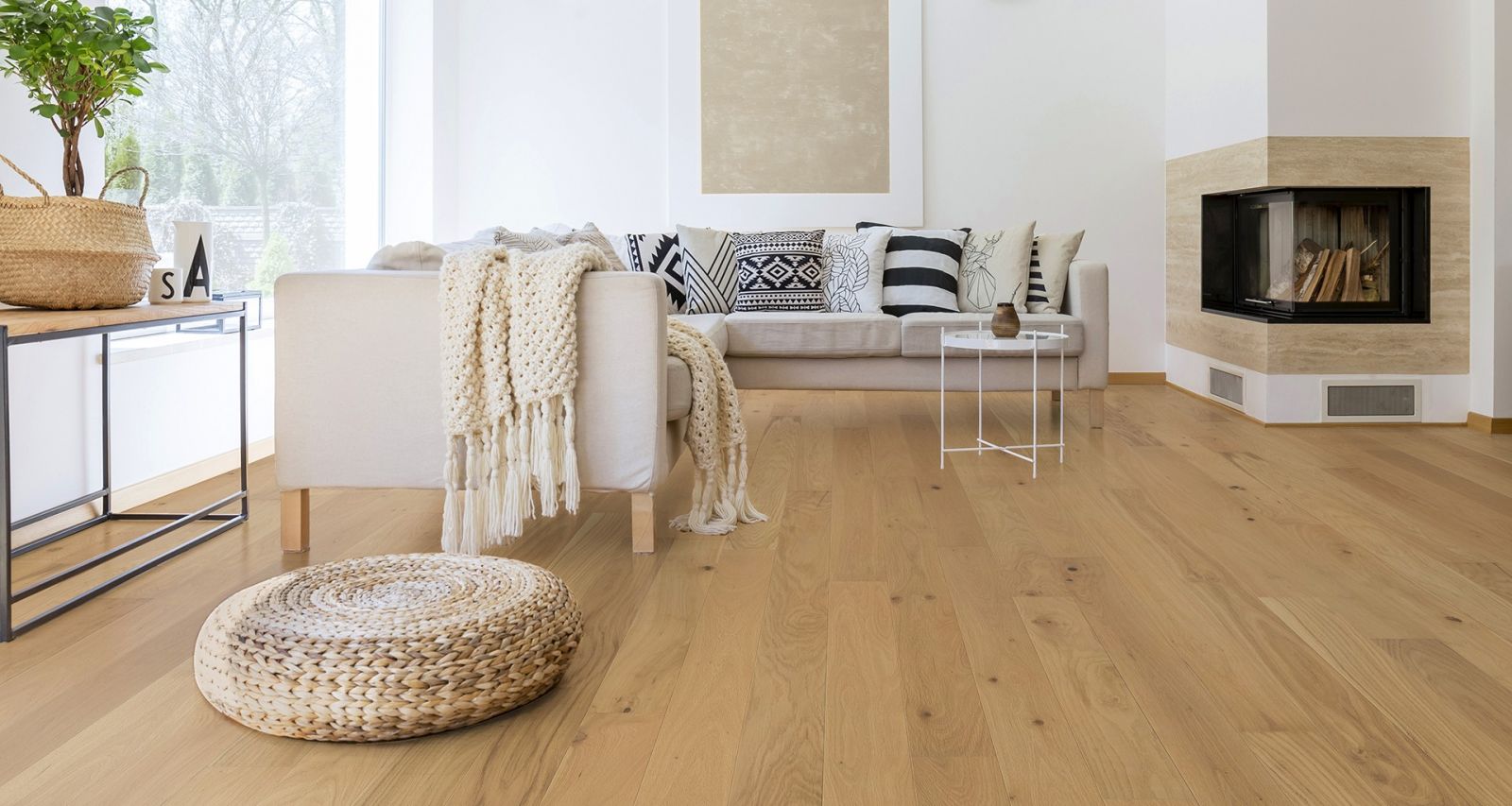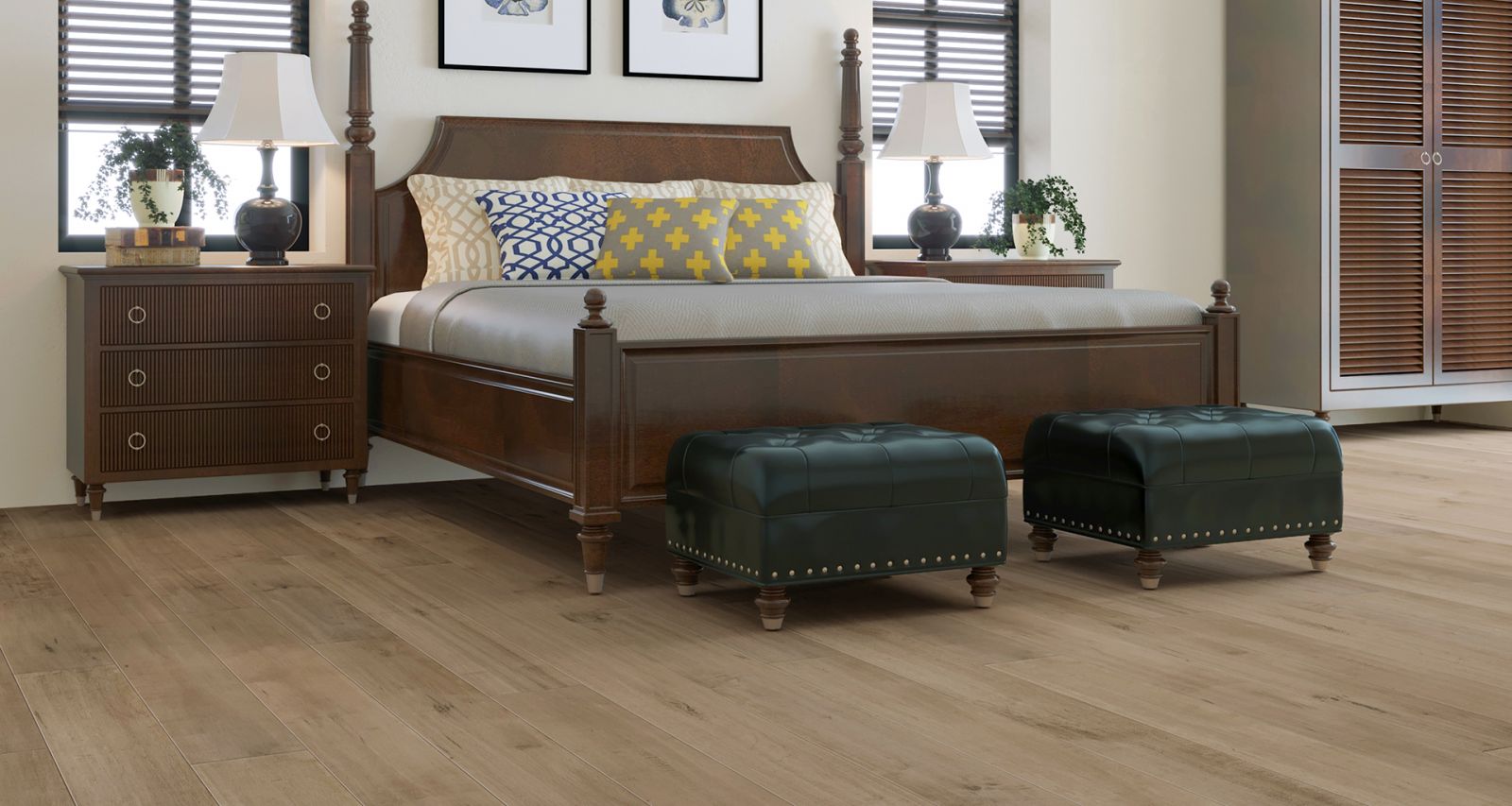
Most Popular Wood Species for Flooring
August 28, 2023
Three of the most common wood species used for flooring are oak, maple, and walnut. Each of these species offers distinct characteristics that can influence your choice for flooring in terms of appearance, durability, and maintenance. Let's delve into a comparison of these three popular wood species for flooring.

Oak is one of the most widely used wood species for flooring due to its durability and classic appearance. It's available in two main types: red oak and white oak. Red oak has a warm, reddish undertone, while white oak has a slightly cooler, more neutral hue. Oak is known for its strong grain pattern and prominent texture, which can add a sense of depth and character to any space. It takes stains well, allowing for various customization options to match your desired color scheme.
In terms of durability, oak is considered a hard hardwood. Its hardness makes it resistant to wear and tear, making it suitable for high-traffic areas in homes and commercial spaces. It's relatively resistant to denting and can withstand the impact of heavy furniture and foot traffic.
Maintenance for oak flooring is relatively straightforward. Regular sweeping and occasional damp mopping are usually sufficient to keep it looking its best. However, because oak is a natural wood, it can be susceptible to moisture and humidity changes. Proper care should be taken to avoid excessive exposure to water.

Maple is another popular choice for flooring, known for its light color and smooth, consistent grain. The light color of maple brightens up rooms and gives a sense of openness. It's often chosen for modern and contemporary interior designs. Maple's fine texture and lack of pronounced grain give it a more uniform appearance compared to species like oak.
While maple is not as hard as oak, it's still relatively durable and can handle everyday use well. However, it might be more susceptible to dents and scratches compared to harder wood species. If you choose maple flooring, consider placing rugs or furniture pads in high-traffic areas to minimize the risk of damage.
Maintenance for maple flooring is similar to that of oak. Regular cleaning is essential, and it's important to wipe up spills promptly to prevent any potential water damage. Given maple's lighter color, it might be more prone to showing dirt and wear, so a bit more attention might be needed to maintain its appearance over time.

Walnut is often chosen for its rich, dark color and elegant appearance. It offers a luxurious and sophisticated feel to any space. The heartwood of walnut ranges from deep chocolate brown to purplish-black, and it often features a striking mix of lighter and darker streaks. The grain pattern can be straight or slightly wavy, contributing to the wood's unique beauty.
While not as hard as oak, walnut is still a relatively durable wood species. Its hardness falls in the medium range, making it suitable for most residential applications. Due to its darker color, walnut can be more forgiving when it comes to hiding scratches and dents.
Maintenance for walnut flooring is similar to other wood species. Regular cleaning and prompt attention to spills are key. It's worth noting that direct sunlight can cause walnut to darken over time, so using window coverings or placing rugs in sunny areas can help mitigate this effect.
In conclusion, the choice between oak, maple, and walnut flooring depends on your aesthetic preferences, the level of durability you require, and the maintenance you're willing to undertake. Oak offers classic beauty and exceptional durability, maple provides a bright and modern look, and walnut exudes a sense of luxury with its rich tones. Consider your lifestyle and design goals to determine which wood species is the best fit for your flooring needs, and access the help and knowledge of the friendly team at Kelowna Floors!
